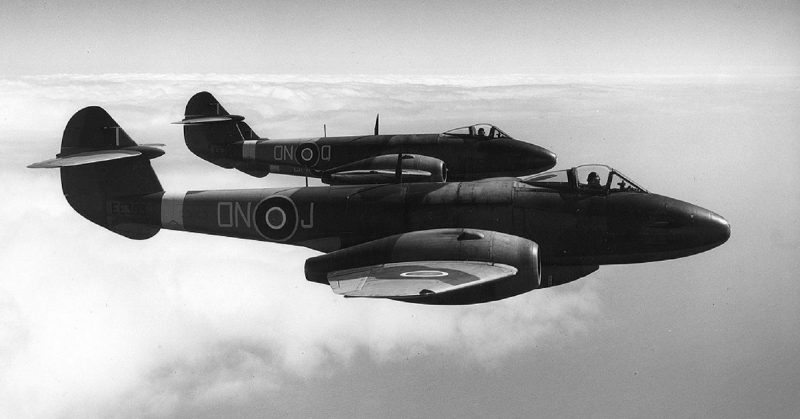The British Gloster Meteor jet fighter entered service late in WWII. It was a ground-breaking aircraft in an era when aerial combat was changing.
The First British Jet Fighter
The Gloster Meteor was the first jet aircraft to serve in squadrons of the RAF.
The Only Allied Combat Jet
Coming into service during WWII, the Meteor was the only Allied jet involved in combat during the conflict. The Germans, who had been ahead of their competitors in rocket technology, fielded jets such as the Messerschmitt Me262 and Heinkel He162 Salamander. However, the air war was mostly fought using propeller-driven planes.
The First Operational Jet Fighter
Despite Germany’s technological advantage, the Meteor was the first operational jet fighter in the world. It became the history-making plane after beating the Me262 into squadron service by a few days.
Carter’s Creation
The Meteor was designed by George Carter, who began work on the project in 1940.
Twin Engines
The jet engines available for Carter’s project had relatively poor thrust. He, therefore, equipped the plane with a pair of engines, one in each wing, to give it enough power.
At first, the Meteor was built using W2B turbojets designed by Frank Whittle. They proved to be too weak, and the plane could not take off. They were replaced by a pair of Halford H1 engines, which powered the first flight by a Meteor. Other engines were tried in a variety of prototypes, as the designers attempted to create a plane with the necessary power and speed.
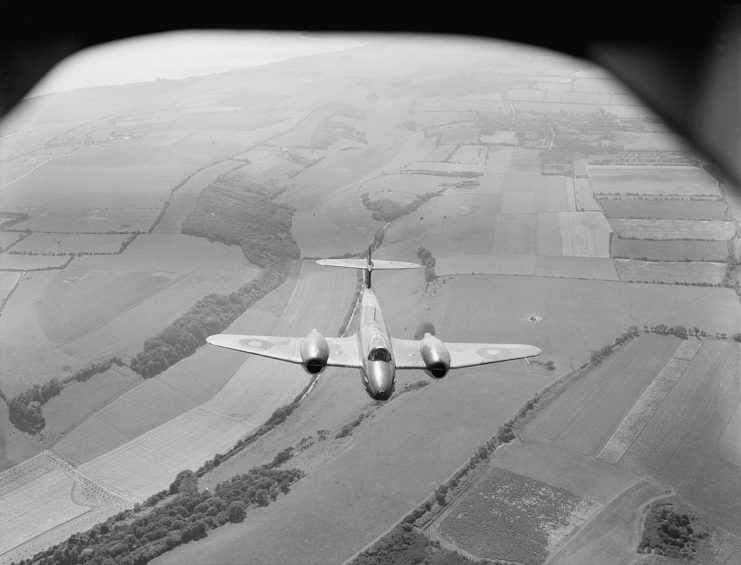
Eventually, they settled on a pair of Rolls Royce W2B/23 Welland engines, which produced 1,700 pounds of thrust. They powered the flight of the fourth Meteor prototype in June 1943 and became the engines for the production model that followed.
Four Cannons
The standard armament of the Meteor was a set of four 20mm Hispano cannons. These were mounted forward of the cockpit, on the sides of the fuselage.
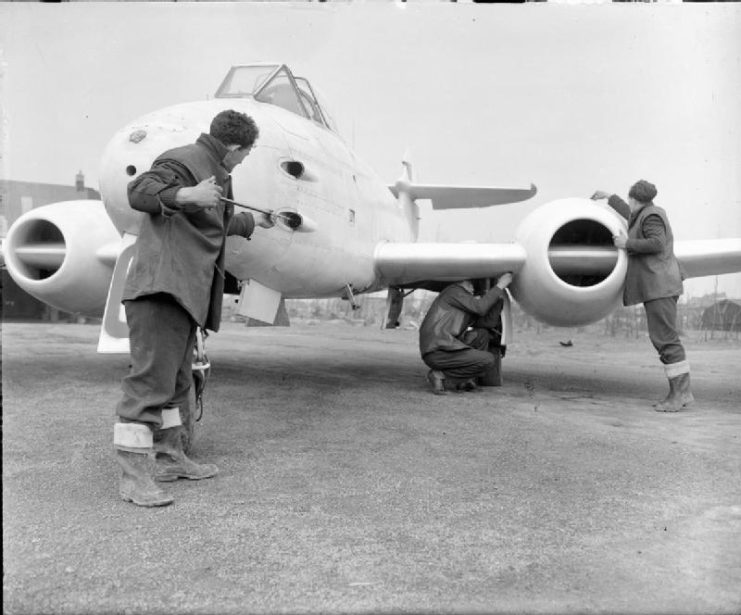
Speed
The Mk I Meteor, the version that first entered the action, had a top speed of 410 miles per hour. By the time of the plane’s heyday in the first half of the 1950s, the Mk 8 was reaching speeds of 600mph.
No.616 Squadron
The first unit to be equipped with Meteors was RAF No.616 Squadron. They received the first of their jet fighters on July 12, 1944.
Fighting the Flying Bombs
The first action Meteors were involved in was not against planes; it was against other jet engines.
Following the D-Day landings, Hitler had ordered strikes against Britain by V-1 flying bombs. Their sudden appearance out of clear skies caused terror and destruction in the south of England. No.616 Squadron was sent to counter them.
Those first sorties by Meteors revealed problems with their guns, but that did not stop daring pilots from taking on the V-1s. On August 4, 1944, Flying Officer Dean used his plane to tip over a V-1 in flight after his guns malfunctioned.
By the end of August, the problem with the guns had been sorted. Including Flying Officer Dean’s actions, they destroyed 13 flying bombs in the space of a month.
First Fighter Versus Fighter Combat
The Allies believed the Meteor was ready for action against Germany’s jets. With initial teething problems out of the way, they began to be deployed over Europe.
In the end, there was no jet versus jet fighting in WWII. The only fighter versus fighter encounter the Meteors engaged in was an inconclusive fight against a group of Focke-Wulf Fw190s. Good planes, but not the technological marvels everyone had feared.
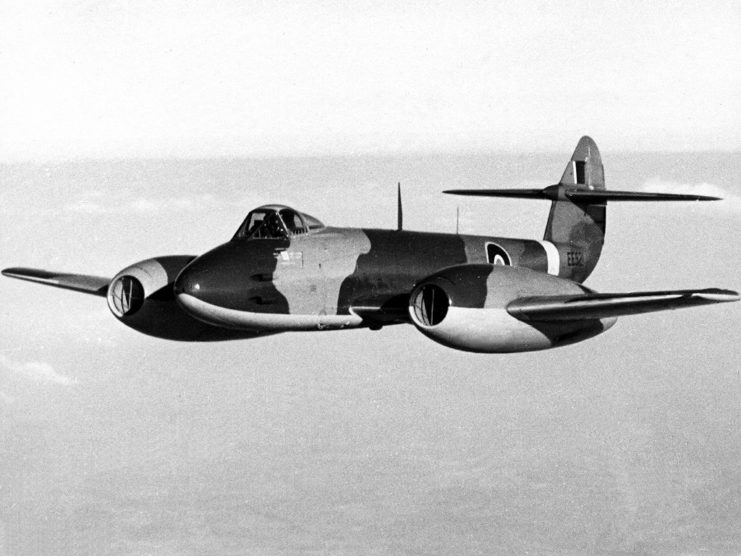
The Backbone of the RAF
Following the war, Meteors became a mainstay of the RAF. The specifics of the aircraft changed over time, with the Meteor F. Mk III gaining more powerful Derwent engines. However, the basic design remained the same.
An Ever-Evolving Design
Over the following decade, the Meteor went through several models with different features.
Engines continued to improve as more powerful ones were produced. The Meteor F. Mk 8 was given an extended fuselage which held an extra fuel tank for long range flying. The same model was fitted with an ejector seat, which was not yet a standard feature on military planes.
Large Numbers for the Cold War
During the first half of the 1950s, the Mk 8 Meteor was the primary daytime interceptor aircraft of the RAF. 1,090 entered service as Britain sought to equip itself with enough fighter cover to deal with the threat of a potential Soviet bomber attack.
Exports
Meteors were exported to friendly countries such as Belgium, Denmark, and the Netherlands. Avions Fairey in Belgium produced its own Meteors under license from the British manufacturer.
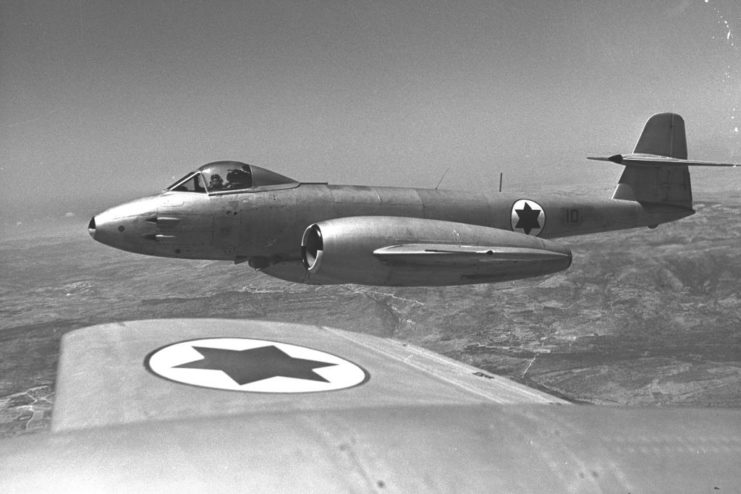
Meteors in Korea
The British did not use the Meteor in Korea, but the Australians did. Meteor F.8s of the Royal Australian Air Force went up against Korean fighters. There, the Meteor proved inferior to the Soviet-produced MiG-15s in jet versus jet combat.
Outclassed and Heading for Retirement
By the mid-1950s, the writing was on the wall for the Meteor. As jet fighters became prevalent, it was outclassed by more modern swept-wing planes. In 1955 the RAF replaced the Meteor with the Hunter.
Some air forces found a use for the Meteor as a ground-attack aircraft, equipping it with air-to-ground rockets and small bombs. The RAF kept its Meteors around, converting some of them into target tugs. They kept flying for the British until 1977.
Source:
Francis Crosby (2010), The Complete Guide to Fighters & Bombers of the World
